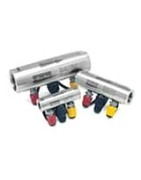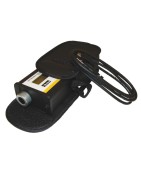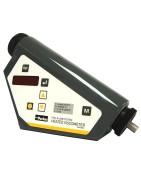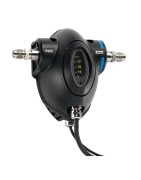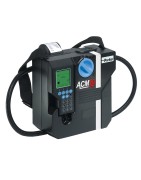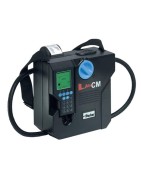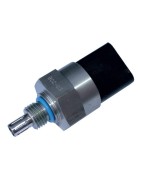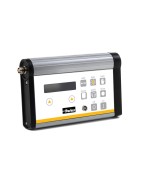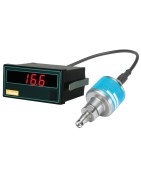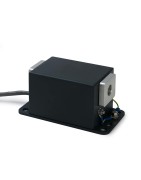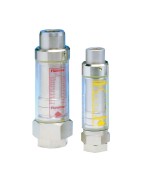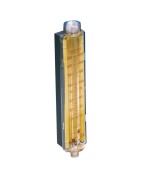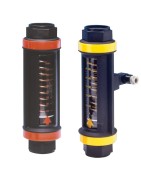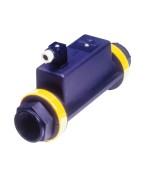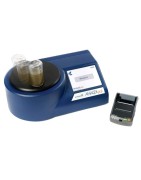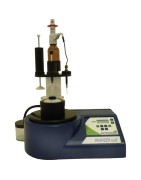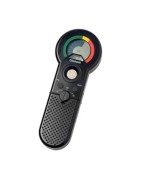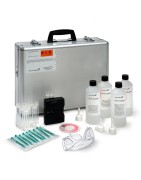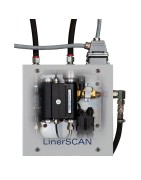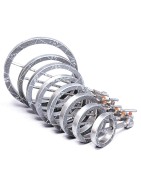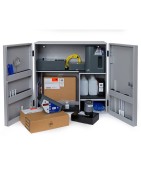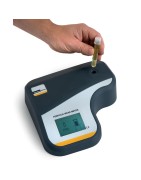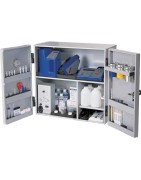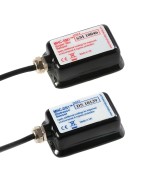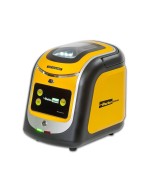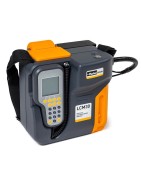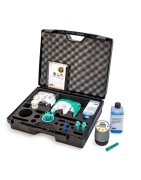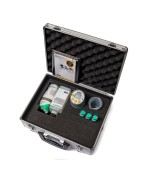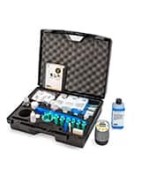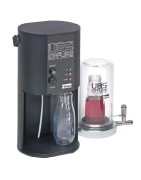Urządzenia monitorujące
Parker offers a broad range of onsite and laboratory solutions for monitoring, evaluating, and testing a wide variety of substances, from water and hydraulic oil to fuel and various gases, for conditions ranging from insolubility and viscos
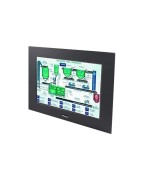
-
SYSTEM 20 MONITORS
System 20 monitors, combined with the inline sensor, give the user accurate and instant readings of low, pressure and temperature without the need to shut down the system. Covering a wide range of flow rates, fluid types and applications, Parker's System 20 sensors are designed to be used with System 20 electronic or analogue monitors, contamination monitors and the H2Oil. Specially developed System 20 sensors are available for use with aggressive fluids. (EPDM Seals).
With System 20 inline sensors installed in a hydraulic system, faults can be predicted and remedied, all you have to do is connect the System 20 Electronic Hand Held Monitor (EM20). Designed to display flow, temperature, differential, rising peak and line pressure, System 20 Electronic can also calculate hydraulic power (kW and hp.) at a given point in a system to establish efficiency and power consumption. System 20 electronics versatility does not end there. The EM20 is automatically calibrated for all System 20 inline sensors using water or oil and can display in l/min, US GPM, bar, psi and kg/cm2.
For operators of industrial and mobile machinery who recognize the benefits of installing System 20 in a hydraulic system, the System 20 hand-held analogue monitor offers significant advantages, particularly in intrinsically safe applications. Like the System 20 electronic, the analogue monitor is completely portable and can be connected immediately to a purpose-designed inline System 20 sensor but requires no power source. The analogue monitor will then - provide the user with an accurate and repeatable analysis of system flow, pressure and temperature - without having to stop the machine.
• For use with all mineral oils, water and water/oil emulsions.
• Analogue Monitor utilizes 3 Day-Glo dial gauges with a protective hinged cover.
• Calibrated up to 380 l/min with dual scale bar/psi & °C/°F. (US GPM also available)
• EM20 Electronic Monitor gives a full digital display.
• Automatically calibrated for all 3 sizes of sensor.
• Indicates line, differential and rising peak
• pressure. Easily scrolled from metric to US.
• 300 test memory.
• Capable of downloading saved data to datum.
Hydraulic system users need to ensure that lost production is kept to the absolute minimum. To ensure this, predictive maintenance and therefore routine condition monitoring of major components is essential. System 20 inline sensors remain at the heart of condition and contamination monitoring. Whether you're mining the coal, building the newbypass, harvesting the crops, crossing the oceans or drilling offshore – whatever the industry, System 20 represents the premier system monitoring available today. -
MHC Bearing Checker
When equipment performance relies on predictive and proactive maintenance, Parker provides the solution. Machinery breakdowns are frequently caused by bearing damage. Unplanned downtime and preventable repairs can be avoided by conducting periodic bearing condition checks. Timely failure detection is important and reduces operating costs.
The Parker Kittiwake Machinery Health Check (MHC) Bearing Checker monitors high frequency Acoustic Emissions (AE) signals naturally generated by deterioration in rotating machinery. The unique way of detecting and processing these signals provides condition-related information in the easiest possible form. It is a state-of-the-art condition monitoring instrument with extreme sensitivity to developing faults.
Easy to Use and Interpret for Quick Analysis
Simply attach this unit to the machinery being tested, using the magnetic sensor head. Within 10 seconds both dB (decibel initial) Level and Distress® values will be displayed. The dB Level and Distress® values are the fundamental parameters of the pocket-sized MHC Bearing Checker. The dB Level is an indication of the overall noise of the bearing and is dependent on speed. The dB Level increases with speed of rotation, but also with degradation of the bearing or inadequate lubrication. The Distress® value provides an instant indication of the state of the bearing's health. A reading below 10 generally indicates normal operation, higher than 10 is usually indicative of bearing damage or the need for attention.
The unit is powered by an internal rechargeable battery, offering up to 1000 measurements between charges. Recharging is accomplished through a micro USB port and the unit can be connected to any standard PC USB port for ease of recharging.
Economically priced, can you afford not to equip each of your maintenance engineers with a unit?
Features and Benefits
• Low cost analysis of Machinery Condition
• Last Measurement Recall
• Ease of Operation
• Simple One-Handed Operation
• Easily Interpreted Results
• Field-Proven Technology
• Rechargeable through USB Port
Target Applications:
• Bearings
• Gearboxes
• Motors
• Pumps -
Heated Viscometer
The Parker Kittiwake Heated Viscometer is a condition monitoring tool that enables the user to make informed operational and maintenance decisions about critical plant and equipment. Monitoring viscosity provides an early warning for potential fluid issues. Fuel and lubricating oils form a major cost element in the operation of almost all industrial machinery and engines; the quality must be closely monitored to protect the investment.
The viscosity of oil is regarded as the most important characteristic. The correct viscosity level provides flow resistance, optimum film strength in system clearances, and minimum friction losses and leakage. Viscosity can increase or decrease as a result of problems such as contamination, fuel dilution, and shear thinning. Measurement of viscosity is extremely important for hydraulic oils, diesel engine oils, gear, and fuel oils. Testing viscosity of fuel oil is important for verifying the correct grade of fuel is delivered, for calculating combustion performance, plus adjusting of fuel handling and injection systems. The Heated Viscometer is suitable for testing viscosity of both residual fuel and lube oil from a wide variety of applications including diesel engines, gas and aviation turbines, gear boxes, hydraulics and marine fuels.
The Parker Kittiwake Heated Viscometer is extremely rugged and ideal for harsh industrial application. It is portable, equipped as a stand-alone kit and is supplied in its own case. The ability to test on-site, at the point of use, enables engineers and facilities managers to conduct oil analysis quickly and easily. Detecting out-of-spec fuels or lubricants can identify potential problems before equipment damage occurs.
The heated viscometer measures the viscosity of the oil sample using a 'tilt' motion, moving from side to side in both directions. While in motion, an internal rolling ball travels through the sample, using gravity, to calculate the viscosity. This measurement is taken at a specific temperature point.
Features:
• Highly accurate, fast results with two readings available at 40°C, 50°C or 100°C
• Test an even greater range of oils, by changing the viscosity index or density
• Ability to test: Unheated with automatic viscosity correction to 40°C, calculated at 100°C for lube oils
• Ability to test: Heated to 50°C for viscosity measurement of residual fuel oils
• Ability to test: Heated to 40°C for viscosity measurement of distillate fuels and lubricating oils
• Verify correct fuel grade or blend has been delivered
• Verify acceptability for storage, pumping and purifiers
• Estimate the combustion performance (CCAI) of fuel oil
• Heavy duty, robust equipment - ideal for long term -
Monitor cząstek stałych montowany w linii — iCountPD
Czystość płynu hydraulicznego odgrywa kluczową rolę w kontekście wydajności i niezawodności urządzeń przemysłowych. Płyny o wysokim poziomie zanieczyszczeń i/lub cząstek stałych mogą uszkadzać komponenty systemu, takie jak pompy, siłowniki lub serwozawory, co wiąże się z koniecznością częstszego przeprowadzania konserwacji i dodatkowymi przestojami oraz przekłada się na wzrost kosztów.
iCountPD firmy Parker to bardzo kompaktowy, zamontowany na stałe laserowy monitor cząstek stałych, który umożliwia ciągłe monitorowanie poziomów zanieczyszczeń i cząstek stałych w układach hydraulicznych. Urządzenie reprezentuje najnowocześniejszą technologię analizy zanieczyszczeń cząstkami stałymi i służy jako ekonomiczne rozwiązanie w zakresie zarządzania płynami i monitorowania stanu w różnych zastosowaniach — od maszyn budowlanych przez urządzenia w zakładach przemysłowych aż po platformy badawcze.
Urządzenie iCountPD dostępne jest w trzech konfiguracjach spełniających unikatowe wymagania zastosowań klientów. Dostępne są następujące opcje:
Standardowe iCountPD — przeznaczone do stanowisk testowych, stanowisk do płukania przepływowego, wózków na filtry i innych zastosowań przemysłowych.
iCountPDR — przeznaczone do urządzeń mobilnych oraz do zastosowań zewnętrznych w środowiskach innych niż niebezpieczne.
iCountPDZ — do zastosowań wymagających bezpieczeństwa na poziomie ATEX strefa II, takich jak platformy morskie lub inne niebezpieczne środowiska. W przypadku zastosowań w strefie I można użyć standardowego urządzenia iCountPD w obudowie NEMA7.
Wszystkie modele iCountPD wyposażone są w wyświetlacz LED, który wykorzystuje trzy zestawy kontrolek do wskazywania wartości klas ISO 4406 / AS4059 i NAS1638. Poszczególne kontrolki klas włączane są na podstawie ustawień klienta. Podczas konfigurowania urządzenia iCountPD można uwzględnić opcjonalny czujnik wilgotności. Czujnik wilgotności przekazuje dane o poziomach nasycenia płynu przepływającego przez komorę pomiarową. Wynik jest skalą liniową w zakresie od 5% do 100% nasycenia.
Dodatkową elastyczność zapewnia intuicyjny regulator przepływu zamontowany za urządzeniem iCountPD (po stronie wylotowej). Wyposażony jest on w zawór ciśnienia różnicowego, który reguluje przepływ w systemie w zakresie określonym w specyfikacji icountPD. Regulator przepływu będzie działać prawidłowo w zakresie od 10,3 bara (150 psi) do 200 barów (2900 psi), a powrót do otwartego systemu nastąpi przy 0 barów.
Jako mobilne monitory cząstek stałych firma Parker oferuje urządzenia iCount LaserCM oraz iCountOS.
Aby uzyskać dodatkowe informacje, zapoznaj się z dokumentacją iCountPD na karcie „Wsparcie produktu".
Rynki:
• Rolnictwo
• Budownictwo
• Przemysł naftowy i gazowy
• Wytwarzanie energii elektrycznej
• Przemysł morski
• Górnictwo
• Leśnictwo
• Zakłady przemysłowe
• Przemysł celulozowo-papierniczy
Zastosowania:
• Żurawie pokładowe i samochodowe
• Sprzęt gaśniczy
• Forwardery
• Prasy hydrauliczne
• Koparki
• Kombajny
• Belownice do odpadów
• Wózki kontenerowe
• Ładowarki kołowe
• Sprzęt wiertniczy
• Zasilacze przemysłowe
• Samoloty
• Rafinerie
• Platformy badawcze
• Stanowiska do płukania przepływowego
• Turbiny wiatrowe
Korzyści:
• Umożliwia ciągłe monitorowanie poziomu zanieczyszczeń w układach hydraulicznych. Zanieczyszczony płyn można następnie wymienić i/lub oczyścić, co prowadzi do usprawnienia działania i zwiększenia wydajności systemu.
• Niezależne monitorowanie trendów zanieczyszczenia systemu pozwala personelowi serwisowemu optymalizować harmonogramy konserwacji oraz diagnozować problemy mechaniczne z urządzeniami i maszynami.
• Kompaktowa, przenośna konstrukcja zapewnia łatwą instalację i użytkowanie.
• Monitor cząstek stałych zamontowany jest w linii i można go używać podczas pracy maszyny, co wydłuża czas sprawności systemu.
Cechy:
• Wskaźnikowe diody LED lub wyświetlacz cyfrowy ostrzegają o niskim, średnim i wysokim poziomie zanieczyszczenia.
• Wskaźniki wizualne informujące o stanie zasilania i ostrzegające o stanach alarmowych.
• Wskaźnik wilgotności względnej (opcjonalny).
• Konstrukcja zgodna z paliwami, płynami hydraulicznymi oraz płynami zawierającymi estry fosforanowe.
• Oprogramowanie autodiagnostyczne.
• Technologia umożliwiająca pełną integrację PC/PLC, taka jak: RS232 i 0–5 V, 4–20 mA, CAN (J1939) (w sprawie innych opcji należy skontaktować się z firmą Parker).
• Dołączone oprogramowanie do konfiguracji i rejestracji danych.
• Ciągły monitoring zakresu przepływu za pośrednictwem 20 wbudowanych czujników systemu (tylko układy hydrauliczne): Rozmiar 0 = od 6 do 25 l/min (optymalny przepływ = 15 l/min). Rozmiar 1 = od 24 do 100 l/min (optymalny przepływ = 70 l/min). Rozmiar 2 = od 170 do 380 l/min (optymalny przepływ = 250 l/min).
• Temperatura: Temperatura otoczenia podczas przechowywania od -20°C do +40°C (od -4°F do +104°F); temperatura robocza otoczenia od +5°C do +60°C (od +41°F do +140°F); temperatura robocza cieczy od +5°C do +80°C (od +41°F do +176°F). -
IcountACM — miernik zanieczyszczenia paliwa lotniczego
Prace rozwojowe prowadzone przez inżynierów CMC we współpracy z Exxon Mobil Aviation uwidoczniły potrzebę opracowania alternatywnej metody testowej umożliwiającej oznaczanie poziomów rozproszonych zanieczyszczeń w paliwie do silników odrzutowych. Pięć lat testów w terenie
oraz rozwój już uznanego i udanego laserowego licznika cząstek w płynie hydraulicznym icountLCM20 zaowocował wprowadzeniem modelu icountACM20 firmy Parker z ulepszonym oprogramowaniem zapewniającym użytkownikowi dokładniejsze rozpoznanie
zanieczyszczeń występujących w próbce. Jako wzorcowy licznik cząstek do pomiaru poziomu zanieczyszczeń w paliwach, urządzenie icountACM20, zgodnie z metodą testową IP564 brytyjskiego Instytutu Energetyki, zostało włączone do specyfikacji paliw lotniczych DEFSTAN 91-91 wyd. 6 jako test wyłącznie sprawozdawczy, obok obecnie stosowanej metody grawimetrycznej (IP423 lub ASTM D5452) oraz metody wizualnej Clear & Bright
(IP216 lub ASTM D2276). Cechy produktu:
• Monitorowanie zanieczyszczenia paliwa lotniczego według specyfikacji paliwa Jet A-1 podanej w normie DEFSTAN 91-91, wydanie 6 — IP654
• Raportowanie czystości wg wielu norm ISO
• Analiza za pomocą laserowego skanowania optycznego
• Produkowane w całości przez firmę Parker z 20-letnim doświadczeniem na rynku liczników cząstek stałych
Specyfikacja:
• 2-minutowa procedura testowa • Najnowsze oprogramowanie do uśredniania w standardzie • Oprogramowanie do pobierania plików -
Przenośny miernik cząstek — iCountOS LaserCM
Czystość płynu hydraulicznego odgrywa kluczową rolę w kontekście wydajności i niezawodności urządzeń przemysłowych. Płyny o wysokim poziomie zanieczyszczeń i/lub cząstek stałych mogą uszkadzać komponenty systemu, takie jak pompy, siłowniki lub serwozawory, co wiąże się z koniecznością częstszego przeprowadzania konserwacji i dodatkowymi przestojami oraz przekłada się na wzrost kosztów.
Przenośny monitor cząstek stałych iCount LaserCM firmy Parker to przyjazne dla użytkownika urządzenie diagnostyczne, które zapewnia personelowi serwisowemu możliwość szybkiej i łatwej oceny czystości płynu lub oleju hydraulicznego w szerokim zakresie zastosowań. Monitor cząstek stałych może być używany podczas pracy maszyn. Jest wyposażony w szereg intuicyjnych funkcji na potrzeby indywidualnych wymagań użytkowników, w tym raportowanie czystości zgodnie z normami ISO/NAS/AS, wprowadzanie i graficzna prezentacja danych, wbudowaną pamięć i zintegrowaną drukarkę.
iCount LaserCM charakteryzuje się sterowanym mikroprocesorem skanowaniem optycznym, które zapewnia dokładny pomiar zanieczyszczeń w zakresie kalibracji od ISO 7 do ISO 22 bez przesycenia monitora. Cząstki mierzone są za pomocą fotodiody przekształcającej natężenie światła w napięcie wyjściowe, które jest rejestrowane w funkcji czasu. Ilość światła utraconego w trakcie przechodzenia cząstki przez okno odpowiada proporcjonalnie jej wielkości. Spadek napięcia zostaje zmierzony i zapisany w komputerze iCount LaserCM, w jednym z sześciu kanałów odpowiednio do wielkości cząstki. Odczyty wyświetlane są na ręcznym wyświetlaczu LCD zgodnie z przyjętymi normami ISO/AS i NAS, gotowe do wydrukowania lub pobrania do komputera przez złącze RS-232. Wbudowany komputer umożliwia przechowywanie do 300 wyników pomiarów.
Kompaktowa, przyjazna dla użytkownika konstrukcja iCount LaserCM oraz łatwość obsługi są tym, co odróżnia to urządzenie od innych przenośnych monitorów cząstek dostępnych na rynku. Obsługa urządzenia ogranicza się do naciśnięcia przycisku uruchomienia i obrócenia pokrętła. Procedura testowania jest wykonywana automatycznie i zajmuje nie więcej niż 2 minuty.
Dostępny jest model iCount LaserCM Aggressive Fluids do monitorowania płynów korozyjnych, takich jak smary na bazie estrów fosforanowych stosowane w lotnictwie komercyjnym. Dostępne są również modele Parker iCountPD do ciągłego wykrywania cząstek w linii oraz iCountOS.
Aby uzyskać dodatkowe informacje, zapoznaj się z dokumentacją iCount LaserCM na karcie „Wsparcie produktu".
Rynki:
•Rolnictwo
•Budownictwo
•Przemysł naftowy i gazowy
•Wytwarzanie energii elektrycznej
•Przemysł morski
•Górnictwo
•Leśnictwo
•Zakłady przemysłowe
•Lotnictwo
Zastosowania:
•Żurawie pokładowe i samochodowe
•Sprzęt gaśniczy
•Forwardery
•Prasy hydrauliczne
•Morskie układy sterownicze
•Zasilacze
•Śmieciarki, wozidła i wózki widłowe
•Koparki
•Kombajny
•Belownice do odpadów
•Wózki kontenerowe
•Ładowarki kołowe
•Sprzęt wiertniczy
•Zasilacze przemysłowe
•Samoloty
Zalety:
•Zapewnia personelowi serwisowemu na miejscu możliwość szybkiego i łatwego pomiaru poziomu zanieczyszczenia płynu lub oleju hydraulicznego w urządzeniach przemysłowych. Zanieczyszczony płyn można następnie wymienić i/lub oczyścić, co prowadzi do usprawnienia działania i zwiększenia wydajności systemu.
•Kompaktowa, przenośna konstrukcja zapewnia łatwe użytkowanie w terenie i w laboratorium.
•Monitora cząstek stałych można używać podczas pracy maszyny, co wydłuża czas sprawności systemu.
•Wyposażony jest w wiele intuicyjnych funkcji na potrzeby indywidualnych wymagań użytkowników, w tym raportowanie czystości zgodnie z normami ISO/AS/NAS, wprowadzanie i graficzna prezentacja danych, wbudowaną pamięć i zintegrowaną drukarkę.
Cechy:
•Możliwość podłączenia do przepływów do 400 l/min (105 gal/min) w przypadku stosowania z czujnikami System 20, a w przypadku użycia próbnika jednopunktowego przepływy mogą być większe
•Maksymalne ciśnienie robocze: 420 barów (6000 psi)
•Zliczanie cząstek: MTD 4+, 6+, 14+, 21+, 38+ i 70+ mikronów(c), ACFTD 2+, 5+, 15+, 25+, 50+ i 100+ mikronów
•Kompatybilność z komputerem: połączenie poprzez złącze RS232 z szybkością 9600 bodów
•Automatyczny zapis cyklu maks. 300 testów można wybrać za pomocą ręcznego wyświetlacza
•2-minutowy cykl testowy
•Funkcja wprowadzania danych umożliwia zapisywanie wartości dla poszczególnych urządzeń
•Możliwość wyboru wykresu danych drukowanego na zintegrowanej drukarce Automatyczne rejestrowanie cykli 300 testów za pomocą zestawu ręcznego LCD
•Wyjście poziomów granicznych do sterowania urządzeniami peryferyjnymi, np. do filtracji off-line, za pomocą wewnętrznych przekaźnikowych wyłączników krańcowych
•Autotestowanie umożliwiające przeprowadzanie automatycznych testów sekwencyjnych na przykład w systemach płukania
•Opcjonalny czytnik kodów kreskowych umożliwiający wczytywanie danych z zestawu ręcznego -
Przenośny monitor cząstek — iCountOS
Czystość płynu hydraulicznego odgrywa kluczową rolę w kontekście wydajności i niezawodności urządzeń przemysłowych. Płyny o wysokim poziomie zanieczyszczeń i/lub cząstek stałych mogą uszkadzać komponenty systemu, takie jak pompy, siłowniki lub serwozawory, co wiąże się z koniecznością częstszego przeprowadzania konserwacji i dodatkowymi przestojami oraz przekłada się na wzrost kosztów.
iCountOS firmy Parker to innowacyjne rozwiązanie do pomiaru jakości olejów hydraulicznych i paliw węglowodorowych w wielu różnych zastosowaniach — od energii odnawialnej oraz sektora morskiego i przybrzeżnego po produkcję, maszyny mobilne, rolnictwo, wojsko i lotnictwo. Urządzenie jest kompaktowe, lekkie (5,5 kg) i wytrzymałe (IP67). Wygodna konstrukcja sprawia, że analiza płynów w terenie jest szybka i niezwykle prosta.
System iCountOS jest bardzo elastyczny i umożliwia personelowi serwisowemu pobieranie próbek bezpośrednio ze zbiornika hydraulicznego, beczki, zbiornika paliwa pojazdu (czyli pracę w trybie offline). Można go również podłączyć do obiegu płynu i pobierać próbki bezpośrednio z linii wysokociśnieniowej po dodaniu adaptera redukującego ciśnienie. Cały system jest całkowicie niezależny — obejmuje laserowy detektor cząstek, akumulator, pompę i pamięć z generatorem stron internetowych do pobierania danych na dowolny komputer stacjonarny lub laptop.
Monitor cząstek iCountOS wykorzystuje zaawansowaną technologię, która zapewnia precyzyjne wyniki oraz wykrywanie w czasie rzeczywistym rozpuszczonej wody i cząstek stałych o wielkości do 4 mikronów. Sercem systemu jest zaawansowany detektor cieni w świetle laserowym, pochodzących od cząstek zanieczyszczeń przepływających w strumieniu badanego oleju przez komorę pomiarową. Standardowo pomiary są wykonywane co sekundę, jednak odstęp czasowy między pomiarami i okres testowania mogą być definiowane przez użytkownika, a wyniki są natychmiast rejestrowane i aktualizowane w czasie rzeczywistym. Dane są wyświetlane na wbudowanym cyfrowym wyświetlaczu OLED i mogą być przechowywane w celu późniejszego przesłania do komputera za pomocą interfejsu strony internetowej iCount przez przewód RJ45. Dzięki wytrzymałej walizce do przenoszenia, stopniowi ochrony IP67 oraz sprawdzonym technologiom laserowym i diagnostycznym IOS jest idealnym narzędziem dla inżynierów zakładowych i utrzymania ruchu do stosowania we wszystkich maszynach stacjonarnych i mobilnych.
Firma Parker oferuje również urządzenie iCount LaserCM, które jest przenośnym monitorem cząstek z dodatkowymi funkcjami, w tym raportowaniem czystości według norm ISO/NAS, wprowadzaniem i prezentacją graficzną danych, wbudowaną pamięcią oraz zintegrowaną drukarką. Do ciągłego wykrywania cząstek w linii dostępny jest model iCountPD.
Aby uzyskać dodatkowe informacje, zapoznaj się z dokumentacją iCountOS na karcie „Wsparcie produktu".
Rynki:
•Rolnictwo
•Budownictwo
•Przemysł naftowy i gazowy
•Wytwarzanie energii elektrycznej
•Przemysł morski
•Górnictwo
•Leśnictwo
•Zakłady przemysłowe
•Lotnictwo
Zastosowania:
•Żurawie pokładowe i samochodowe
•Sprzęt gaśniczy
•Forwardery
•Prasy hydrauliczne
•Morskie układy sterownicze
•Zasilacze
•Śmieciarki, wozidła i wózki widłowe
•Koparki
•Kombajny
•Belownice do odpadów
•Wózki kontenerowe
•Ładowarki kołowe
•Sprzęt wiertniczy
•Zasilacze przemysłowe
•Samoloty
•Turbiny wiatrowe
Zalety:
•Zapewnia personelowi serwisowemu na miejscu możliwość szybkiego i łatwego pomiaru poziomu zanieczyszczenia płynu lub oleju hydraulicznego w urządzeniach przemysłowych. Zanieczyszczony płyn można następnie wymienić i/lub oczyścić, co prowadzi do usprawnienia działania i zwiększenia wydajności systemu.
•Kompaktowa, przenośna konstrukcja zapewnia łatwe użytkowanie w terenie i w laboratorium.
•Monitora cząstek stałych można używać podczas pracy maszyny, co wydłuża czas sprawności systemu.
•Opracowany z myślą o zapewnieniu wielu funkcji w połączeniu z prostotą i łatwością obsługi, w cenie znacznie niższej niż konkurencyjne systemy i mieszczącej się w większości budżetów na utrzymanie.
•Zaprojektowany zgodnie z najnowszymi światowymi standardami, takimi jak: znak CE, deklaracja zgodności WE, dyrektywa maszynowa, normy EMC EN 61000-6-3:2001, EMC EN 61000-6-2:2001 oraz EMC EN 61010-1:2001.
Cechy:
•Sprawdzona technologia wykrywania laserowego
•Najlepsza w swojej klasie wbudowana pamięć umożliwiająca przechowywanie do 250 000 zestawów wyników testów
•Wytrzymała walizka — solidna wodoszczelna walizka IP54 (gdy jest otwarta) i w pełni uszczelniony, odporny na uderzenia panel przedni ze szczotkowanej stali nierdzewnej
•Lekka — z urządzeniem waży mniej niż 12,1 funta (5,5 kg)
•Wykrywanie w czasie rzeczywistym rozpuszczonej wody i cząstek stałych o wielkości do 4 mikronów
•Długi okres użytkowania, praca zdalna — regulowane zasilanie 12 V DC z 4-stykowym przyłączem M12 oraz akumulator NiMH detektora do użytku na miejscu lub w odległych lokalizacjach
•Kontrola poziomu płynu i ciśnienia — automatyczne dostosowanie natężenia przepływu do optymalnego poziomu 60 ml/min
•Maksymalne ciśnienie robocze online: 2,5 bara (36 psi). Do zastosowań wysokociśnieniowych dostępny jest opcjonalny wlotowy zawór redukcyjny
•Specyfikacje: zakres klas międzynarodowych — do ISO 22 (+/- klasa ISO) NAS 0–12
•Stopień ochrony IP54 (urządzenie otwarte), stopień ochrony IP67 (urządzenie zamknięte) -
FPS - Fluid Property Sensor
The FPS is a novel fluid property sensor that will directly and simultaneously measure the viscosity, density, dielectric constant and temperature of fluids. Relying on patented tuning fork technology, the sensor monitors the direct and dynamic relationship between multiple physical properties to determine
the quality, condition and contaminant loading of fluids such as engine oil, fuel, transmission and brake fluid, hydraulic, gears oils, refrigerants and solvents.
The multi-parametric analysis capability improves fluid characterization algorithms. The FPS provides in-line monitoring of fluids for a wide range of OEM and aftermarket installations including fluid reservoirs, process lines and pressurized high flow conduits (e.g., engine oil gallery) for applications that include on and off highway vehicles, HVAC&R, compressors, industrial equipment and turbines. A universal digital CAN J1939 compliant protocol provides easy to connect interface to main Host controller. A simple 4 pin connector allows for cost effective mounting options.
Important note
The Parker FPS does not use a “fingerprint” principle. Sensors using a “fingerprint” principle require up-front calibration in the fluid type subject to future analysis. This calibration can take up to 200 hours, during which time the aging of the oil can start and hence the calibrated reference is not accurate. When a different oil is applied, sensors using the “fingerprint” principle require new calibration. Parker's PFS sensor directly measures the important fluid properties without the need for calibration in-advance.
Advantages
• Continuously measurement of important fluid properties
• Early detection of fluid aging
• No up-front calibration required
• On board processor with real-time data analysis with 5, 10 or 24 volts supply -
MHC-Memo Pro On-Site Acoustic Emissions Instrument
The MHC-Memo Pro is the top of the range hand held device, featuring enhanced analysis capability, for those looking for the absolute instrument to assist their condition monitoring program.
The MHC-Memo Pro is able to monitor a near unlimited number of machines on a periodic basis. In addition to storing Standard and Super Slo modes within its walk around routes, the MHC-Memo Pro can also store manually input values from any other device (e.g. a pressure gauge, kVA meter etc.). The MHC-Memo Pro can hold up to 6 routes at a time, each having up to 435 measurement points within a Site, Area, Machine & Point hierarchy.
The MHC-Memo Pro is able to monitor a near unlimited number of machines on a periodic basis. In addition to storing Standard and Super-Slo modes within its walk around routes, the MHC-Memo Pro can also store manually input values from any other device (e.g. a pressure gauge, kVA meter etc.). The MHC-Memo Pro can hold up to 6 routes at a time, each having up to 435 measurement points within a Site, Area, Machine & Point hierarchy. The unit can also be set to auto log readings at a set interval so that machine performance can be monitored and measured in areas where it may be hazardous to be present during operation (alternatively, a permanently installed Smart sensor may be used for such applications, see our 4000 series range).
The inclusion of Super-Slo mode allows bearings on many slowly rotating applications to be easily analysed, e.g. slew bearings on cranes, tank stirers etc. This is very difficult to achieve using traditional Vibration Analysis techniques.
Supplied in a rugged case for protection from the hardest knocks, the MHC-Memo Pro comes with noise defending headphones, communications leads, a standard and a 225 mm extension probe and a software CD. Additionally, combined with the optional MHC-Airborne sensor and using the provided headphones, the unit provides a powerful detection capability for air and vacuum leaks.
All readings can be downloaded to the Memo View Pro software package supplied as standard. Memo View Pro features Trend plots, Alarm Levels, Exception Reports, Missed Points List and User Notes. The addition of FFT Capture Spectrum and AutoLog functions make the MHC-Memo Pro the ultimate tool for Condition Monitoring specialists.
Product Features
• Advanced Acoustic Emission measurement tool for rotating machinery analysis
• Supplied with MHC Analysis Pro, machine database logging and reporting software
• Store, view and perform frequency analysis with FFT Capture Spectrum and AE Lab software
(supplied)
• 2610 measurement points in 6 routes can be stored in the instrument. Different routes can be loaded at will
• Super-Slo mode allows monitoring of slowly rotating machinery down to 0.25 rpm
• Air / Vacuum leak detection with included MHC Airborne Sensor
Technical Specifications
• Dimensions
205 (w) x 130 (h) x 40 (d) mm
• Weight
800g (main unit only with batteries)
• Operating Temperature
0 - 50°C
• Measurement Std
Distress®, dB Level
• Measurement Slo
Peak, Intensity, Extent®, dB Level
• Dynamic Range
92 dB (40,000:1)
• Audio Out
Hi / Lo ranges
• Earphone / defenders
Included
• Display
Backlit LCD alphanumeric, 2 lines by 16 characters
• Keypad
10 keys, sealed membrane
• Power Save
After 8 minutes
• Battery info
4 x AA (LR6) - 26 hours with backlight off (NiMH supplied), 34 hours alkaline -
icountMS - Moisture Sensing
Fast, reliable and accurate inline detection of moisture in fluids MS moisture sensors provide fast, reliable and accurate inline detection of moisture in fluids. Technology developed for preventative maintenance programmes. MS150 is the 'low pressure' option for suction line/reservoir applications. MS200
is the 'Programmable' sensor monitoring and reporting relative humidity (RH), moisture content in oils. MS300 'Intrinsically safe' sensor ATEX certified for use in hazardous
Zone 0 environments.
In-Line Moisture Measurement of Hydraulic & Lubricating Oils.
Parkers Moisture Sensor Range offers fast, reliable and accurate in-line detection of moisture in fluids. The MS transducer type technology has been especially designed with the preventative maintenance programme environment in mind. The industry accepted sensing cell device will monitor and report Relative Humidity (RH), moisture content in oils. The water content measurement technique offers the end user benefits over the current standard form of water content reporting (PPM). This allows for real time preventative maintenance to be undertaken and corrective actions to be made. By knowing that the water contamination is still within the oils absorbing range, less than 100%, reclaiming fluid properties before additive damage occurs can initiate calculable cost savings.
Product Features:
• MS moisture sensors provide fast, reliable and accurate inline detection of moisture in fluids.
• Technology developed for preventative maintenance programmes.
• MS150 'low pressure' suction/Return line applications. 10 bar maximum operating pressure.
• MS200 'Programmable' sensor monitoring and reporting relative humidity (RH), moisture content in oils. 420 bar MAOP.
• MS300 'Intrinsically safe' sensor ATEX certificated for use in hazardous Zone 0 environments. 420 bar MAOP.
• Temperature Outputs on all versions.
Features & Benefits
• Continuous, online moisture indication, for hydraulic and lubricating systems.
• Reporting of % relative humidity of water content, giving the user information on how close to the fluids real saturation point.
• Reliable data on the rate of water absorption.
• Sensing cell technology using a laser trimmed thermoset polymer, for capacitive sensing that is capable of absorbing water molecules due to its micro porous structure.
• Uses a thermistor for temperature compensation correction. Offering total confidence in reporting the %RH relative humidity over the sensors temperature range.
• A purpose designed tee adaptor allows for easy installation into an existing fluid system.
• The MS200 can also be specified with a bench top wand offering the end user greater flexibility.
• Wand not available with MS150 or MS300
Typical Applications
• Ground support vehicles
• Pulp and paper plants
• Marine hydraulics
• Power transmission & distribution
• Forestry
• Industrial hydraulics
• Earth moving applications
• Agricultural
• Hazardous Areas (Zone 2)
• Theme parks (Ride hydraulics) -
MWDS - Metal Wear Debris Sensor
It's no secret that particles result from wear. It is imperative to know, not just the number of particles which pass through your system, but also the size and metallic composition. The Parker Kittiwake Metallic Wear Debris Sensor goes beyond normal protection systems, allowing you to monitor in real time and take immediate action on the first indication of change, thereby preventing all types of failure.
The Kittiwake Metallic Wear Debris Sensor can be mounted within almost any lubrication system, on any type of machine. By using proven inductive coil technology, combined with smart algorithms to provide a particle size distribution count, the sensor measures ferrous and non-ferrous metals resulting from the wear debris within the lubricant. This puts the user in control. The severity of the problem increases with an escalation in the production of larger wear debris particles.
With both digital and analogue outputs, the sensor can be easily integrated into existing condition monitoring control systems, putting the user in control. Whether it's checking the health of the machine or alerting to changing wear patterns, the sensor provides instant information, complementing existing laboratory oil analysis programmes and helping the user make informed maintenance planning decisions. -
Flowline - Oil and Water CalibratedFlowmeters
Flowline
Parker HFDE has an extensive range of flow metering products. LoFlow oil and water flowmeters. 10 bar max. working pressure. Easiflow meters and flowswitches with flows from 1 to 150 l/min. Dataflow 4-20mA and pulse output flow transmitters and the Dataflow Compact inline flow transmitter. Flowline oil, water and air calibrated flowmeters and flowswitches available in brass or Stainless Steel. Hydraulic Test Units for the speedy diagnosis of hydraulic circuit faults with flow ranges from 2 to 360 l/min.Works in any plane.
• Works in any plane.
• Pressure up to 350 bar (5000 psi).
• Flows up to 360 l/min.
• Accuracy ±5% FSD.
• Repeatability ±1% FSD.
• Direct reading.
• Relatively insensitive to viscosity changes.
• Oil or water calibrated.
• Optional reed switch upgrade. -
Loflow - Oil and WaterFlowmeter
Loflow
Parker HFDE has an extensive range of flow metering products. LoFlow oil and water flowmeters. 10 bar max. working pressure. Easiflow meters and flowswitches with flows from 1 to 150 l/min. Dataflow 4-20mA and pulse output flow transmitters and the Dataflow Compact inline flow transmitter. Flowline oil, water and air calibrated flowmeters and flowswitches available in brass or Stainless Steel. Hydraulic Test Units for the speedy diagnosis of hydraulic circuit faults with flow ranges from 2 to 360 l/min. The LoFlow meter has been designed for those industries where the need exists for a low cost solution to small measurements of flow with an accurate reading. LoFlow uses the well tried and tested principle of variable area flow measurement utilising the movement of a ball or float inside a calibrated tapered bore.
• Easy to read, permanent printed scales.
• Large scale definition for precise measurement.
• Easy panel mounting assembly.
• Negligible pressure drop characteristics.
• 10 bar pressure rating.
• Simple to use. -
Niskociśnieniowy przepływomierz mechaniczny — Easiflow
Seria Easiflow firmy Parker obejmuje szeroką gamę montowanych w linii urządzeń do mechanicznego pomiaru natężenia przepływu, które idealnie nadają się do zastosowań o dużym przepływie i niskim ciśnieniu, w tym do linii powrotnych płynów hydraulicznych oraz instalacji uzdatniania wody. Przepływomierze są nieinwazyjne (tj. nie blokują przepływu) i mają przezroczysty szklany korpus, który umożliwia użytkownikom wzrokowe określenie natężenia przepływu w instalacji i/lub linii. Mierniki mogą być również wyposażone w kontaktron magnetyczny, który może sterować zaworami i/lub pompami albo aktywować sygnały alarmowe, gdy natężenie przepływu przekroczy ustalony przez użytkownika poziom lub spadnie poniżej niego.
Przepływomierze Easiflow są bardzo prostymi i wszechstronnymi urządzeniami, które wykorzystują zmienną aperturę (tj. zasadę zmiennej powierzchni). Mierniki mogą pracować w dowolnej płaszczyźnie. Są wyposażone w wewnętrzny tłok, który porusza się wraz ze wzrostem natężenia przepływu, otwierając większą powierzchnię w celu przepuszczenia przepływającego powietrza, wody lub oleju hydraulicznego. Taka konstrukcja zapewnia użytkownikom bezpośrednie wizualne wskazanie wartości natężenia przepływu oraz służy jako wysoce niezawodna i ekonomiczna metoda pomiaru przepływu w porównaniu z wieloma innymi konkurencyjnymi produktami na rynku, w tym turbinami i elektronicznymi urządzeniami pomiarowymi.
Dostępnych jest wiele modeli urządzeń Easiflow spełniających indywidualne wymagania dotyczące przepływu płynów w instalacjach klientów. Natężenia przepływu mieszczą się w zakresie 1–150 l/min (0,25–40 gal/min) przy maksymalnym dopuszczalnym ciśnieniu roboczym 10 barów (145 psi). Wszystkie urządzenia Easiflow są kalibrowane zarówno pod kątem oleju, jak i wody oraz charakteryzują się dokładnością i powtarzalnością wynoszącymi odpowiednio ±5% i ±1% odchylenia w pełnej skali.
Aby uzyskać informacje dotyczące zgodności z płynami korozyjnymi, skontaktuj się z przedstawicielem Parker Filtration.
Rynki:
•Rolnictwo
•Budownictwo
•Przemysł naftowy i gazowy
•Przemysł morski
•Górnictwo
•Leśnictwo
•Przemysł
Zastosowania:
•Powrotne przewody hydrauliczne
•Hydrauliczne urządzenia testowe
•Systemy uzdatniania wody
Zalety:
•Konstrukcja korpusu z przezroczystego szkła umożliwia użytkownikom szybkie i łatwe określenie natężenia przepływu w instalacji i/lub linii
•Pomaga chronić newralgiczne urządzenia przed uszkodzeniem, zapewniając utrzymanie poziomu płynu hydraulicznego w określonym zakresie
•Stanowi niezawodną i ekonomiczną alternatywę dla drogich urządzeń do pomiaru przepływu, takich jak turbiny czy przepływomierze elektroniczne
Cechy:
•Natężenie przepływu 1–150 l/min (0,25–40 gal/min)
•Zakres temperatur roboczych (olej): od 5 do +80°C (od +41 do +176°F)
•Zakres temperatur roboczych (woda): od 5 do +60°C (od +41 do +140°F)
•Maksymalne dopuszczalne ciśnienie robocze: 10 barów (145 psi)
•Opcjonalny kontaktron mechaniczny
•Korpus z przezroczystego szkła
•Skalibrowane pod kątem oleju i wody -
Dataflow - Flow Transmitters
Dataflow
Parker HFDE has an extensive range of flow metering products. LoFlow oil and water flow meters. 10 bar max. working pressure. Easiflow meters and flow switches with flows from 1 to 150 l/min. Dataflow 4-20mA and pulse output flow transmitters and the Dataflow Compact inline flow transmitter. Flowline oil, water and air calibrated flow meters and flow switches available in brass or Stainless Steel. Hydraulic Test Units for the speedy diagnosis of hydraulic circuit faults with flow ranges from 2 to 360 l/min. The LoFlow meter has been designed for those industries where the need exists for a low cost solution to small measurements of flow with an accurate reading. LoFlow uses the well tried and tested principle of variable area flow measurement utilizing the movement of a ball or float inside a calibrated tapered bore.
• 4 to 20mA output.
• Pulse output available for totalizing/batching.
• Works in any plane.
• Accepts reverse flow.
• Maximum flow 150 l/min.
• Negligible pressure drop.
• Pressures up to 10 bar.
• Low cost. Simple to install.
• For use with most liquids.
• Factory calibrated. Accuracy ±2%.
• DIN 43650 plug connection (included).
Dataflow Compact – The Low Cost Transmitter the Dataflow Compact Transmitter was designed to offer OEM's and end users alike a means of monitoring low flows on liquids with an electronic output signal- but at low cost. Fluid passes through the one piece sensor body impacting on the twin vanned turbine rotor, causing it to rotate at a speed proportional to the flow rate. Two opposing photo-transistors are mounted either side of the rotor and externally of the clear sensor body, these generate a continuous signal. As the rotor spins each blade obscures the infra-red signal. This is then converted into an industry standard pulse output signal – compatible with inexpensive display units for flow rate, totalising, batch control and large, central control systems. The lightweight Grilamid body with its virtually unrestricted flow path, offers negligible pressure drop for flows up to 25 I/min and withstanding pressures up to 20 bar.
• Pulse output signal for flows up to 25 l/min.
• Lightweight and robust.
• Operates in any plane. Simple to install.
• Low cost flow measurement.
• Negligible pressure drop.
• Accepts reverse flow.
• 3/8 BSP male connection.
• Water or compatible clear fluids only.
• Ideal for washing machines, showers and vending machines.
Flow Rate Totalising batch control and applications in many industries. Dataflow Compact Transmitters are small and very robust having been developed and tested extensively in industry applications where space is a restriction. Dataflow Compact with its Grilamid body and BSP connections can be installed almost anywhere and once installed will give accurate and reliable output signalling. -
ANALEX_pql -Ferrous Debris Monitor
The ANALEXpql ferrous debris monitor provides the most accurate means of detecting and measuring ferrous wear debris in lubricating oils, hydraulic oils and greases.
• Your customer's risks reduced - Wear debris measured, irrespective of particle size and distribution.
• Your customer's confidence increased - Established, trusted PQ Index and improved accuracy and reliability.
• Your laboratory's sample capacity increased - Measurement time more than halved, sample ID entry simplified and device footprint reduced.
• Your laboratory's uptime increased - Improved reliability and durability
• Simple to integrate into your processes - Sample container flexibility
• Easy to upgrade to these benefits - Backwards data compatibility
• Designed to fit into your laboratory's systems - PC and Ethernet Connectivity and 4 x USB Ports -
ANALEX_rpd -Rotary Particle Depositor
The ANALEXrpd Particle Depositor offers a rapid and simple method of debris separation. A measured volume of sample is applied, by pipette, to a glass substrate located on a rotating magnet assembly. particles of debris are deposited radially as three concentric rings by the combined effects of rotational, magnetic and gravitational forces.
Removal of the lubricant by solvent washing and drying gives a stable well-separated deposit pattern ready for examination by optical or electron microscope. The 'Guide to Wear Particle Recognition', which is supplied with the ANALEXrpd , provides users with an indication of the type of wear taking place by observation of the distinctive features or compositional aspects of the debris being produced. The separated debris can also be measured quantitatively by placing the substrate in an ANALEX PQ Ferrous Debris Monitor. -
Ręczny monitor stanu oleju — Oilcheck
Czystość oleju odgrywa kluczową rolę w kontekście wydajności i niezawodności urządzeń przemysłowych. Oleje o wysokim poziomie zanieczyszczeń, jak również te, które osiągnęły koniec cyklu użytkowania, mogą uszkodzić komponenty systemu, takie jak pompy, siłowniki i serwozawory, co prowadzi do skrócenia okresów międzykonserwacyjnych, wydłużenia czasu przestojów i wzrostu kosztów.
Oilcheck firmy Parker to ręczne, zasilane bateryjnie urządzenie do monitorowania stanu, które pozwala pracownikom serwisu w szybki, łatwy i ekonomiczny sposób zmierzyć jakość i przydatność oleju stosowanego w pojazdach i/lub urządzeniach. Urządzenie to stanowi nieocenione narzędzie diagnostyczne dla właścicieli flot oraz personelu serwisowego i mechaników pojazdów, a także eliminuje konieczność przeprowadzania kosztownych i często czasochłonnych analiz laboratoryjnych olejów mineralnych i syntetycznych stosowanych w silnikach, przekładniach i układach smarowania łożysk.
Oilcheck działa na zasadzie pomiaru różnicy stałej dielektrycznej testowanego nowego płynu (tj. nieużywanego oleju). Użytkownicy po prostu umieszczają próbkę oleju w komorze czujnika i naciskają przycisk „TEST", który zeruje urządzenie. Po wyczyszczeniu komory odtłuszczaczem i umieszczeniu w niej próbki zużytego oleju na wyświetlaczu LCD pojawia się nowy odczyt do porównania. Jakość zużytego oleju jest następnie wizualnie wskazywana użytkownikowi na kolorowej skali (zielony/bursztynowy/czerwony). Znaczne zmiany stałej dielektrycznej wskazują personelowi serwisowemu i inżynierom konieczność wymiany oleju, co przyczyni się do ochrony komponentów wewnętrznych przed uszkodzeniem i wydłuży okres eksploatacji silnika. Urządzenie Oilcheck może wykryć zmiany stanu płynu spowodowane przez wniknięcie wody, cząstek stałych lub metali oraz utlenienie.
Aby uzyskać dodatkowe informacje, zapoznaj się z dokumentacją iCountOS na karcie „Wsparcie produktu".
Rynki:
•Motoryzacja
•Transport
•Rolnictwo
•Budownictwo
•Przemysł naftowy i gazowy
•Przemysł morski
•Górnictwo
•Leśnictwo
•Zakłady przemysłowe
•Lotnictwo
Zastosowania:
•Samochody
•Pojazdy ciężarowe
•Sprzęt ciężki
•Ciągniki
•Kosiarki
Zalety:
•Personel serwisowy ma możliwość szybkiej, łatwej i taniej oceny jakości oleju oraz wczesnego ostrzegania o zbliżającej się awarii silnika
•Kompaktowa, przenośna konstrukcja zapewnia łatwość użytkowania w terenie
•Eliminacja konieczności przeprowadzania kosztownych oraz często czasochłonnych analiz laboratoryjnych olejów mineralnych i syntetycznych stosowanych w silnikach, przekładniach i systemach smarowania łożysk
Cechy:
•Masa: 0,4 kg
•Nadaje się do olejów mineralnych i syntetycznych
•Żywotność baterii: ponad 150 godzin lub 3000 testów
•Pojemność pamięci: pamięta ostatnią kalibrację
•Wymiary: 250 × 95 × 34 mm (9,8 × 3,7 × 1,3 cala)
•W pełni przenośne, zasilane bateryjnie
•Wyświetlacz numeryczny pokazujący różnice dielektryczne między czystym a zanieczyszczonym paliwem -
Cold Corrosion Test kit - Parker Kittiwake
Parker Kittiwakes patent Cold Corrosion Test Kit is a quick, simple to use chemical test that provides an accurate measure of the parts per million (PPM) value of Fe2+ and Fe3+ compounds in used scrape down oil. Rather than simply giving a figure for the total iron (including metallic compounds), which other tests provide, knowing the specific PPM of corroded iron allows informed decisions to made in adjustments to feed rates and the Base Number (BN) of the oil used. The quick test (<5 minutes per cylinder) allow rapid analysis of the whole engine. No long waiting periods are required to obtain accurate measurements. Coupled with tests to measure the metallic content (such as Parker Kittiwakes LinerSCAN or Analex Alert), the cause of high levels of iron can accurately be determined. High Iron levels caused by scuffing incidents or Catalytic Fines in bunker fuels can be isolated from cold corrosion issues. Conversely, corrosion caused by sulphuric acid corrosion of the liners can be isolated from other wear mechanisms in the cylinder chamber.
Major OEM's recommend a maximum cold corrosion figure of 200PPM. Ideally this should be kept below 100PPM within the engine to maintain low wear levels.
Used in conjunction with other onboard testing recommended by engine OEM's, such as regular residual Base Number BN testing, an accurate picture of the operating conditions can be quickly determined and the correct course of corrective actions implemented. Parker Kittiwakes BN test kits and metallic wear debris meters make the perfect companion to the Cold Corrosion Test Kit.
• Excellent correlation between field measurements and lab Inductively Coupled Plasma (ICP) results (see graph)
• Monitors products of corrosion that cannot be detected magnetically
• Provides early warning that cold corrosion is underway
• Gives a running commentary on internal corrosion as the operator adjusts the cylinder liner jacket temperature or oil feed rate
• When used in conjunction with the Parker Kittiwake LinerSCAN, it is possible to monitor abrasive and corrosive wear independently
• Each test is simple, cost effective and quick (<5 minutes) to complete -
LinerSCAN - Cylinder Liner Monitor
The world's first real-time alarm system for engine liner wear. LinerSCAN marks a new era in asset protection, providing early warning against critical engine damage whilst providing the information needed to save on lube oil costs.
Parker Kittiwake's LinerScan system is designed to remove the uncertainty on cylinder damage resulting from low fuel quality, slow steaming, low sulphur levels, lower oil feed rates and cylinder oil formulation changes.
Why is it becoming increasingly important to monitor wear?
• Financial savings
• Optimize feed rates
• Highlight problems with low sulphur fuel
• Aid in preventative maintenance
• Increase lifetime of your cylinder liners
• Prevent engine damage and down time
System Benefits:
LinerSCAN provides highly accurate feedback about the wear condition in your engine. Trials have shown that LinerSCAN highlights the first signs of damage earlier than other systems and enables safe reduction of lubricant feed rate. If the wear rate increases during normal conditions the system will generate an alarm which, when connected to the ships alarm, provides instant feedback allowing for immediate action. This allows for preventative maintenance during the ships passage to the next port, or even a route change. LinerSCAN is a fully automated system and can help save money by optimizing the lubricant feed rate, reducing your maintenance loads and by helping you prevent unnecessary engine damage.
• Provides accurate and actionable data on your engine wear levels
• Enables safe reduction of cylinder oil feed rates
• Dramatically reduces engine damage by spotting the first signs of scuffing or piston ring damage
• Highlights the issues caused by fuel problems
• Allows an informed running-in process
• Runs fully automated – with no human interference
• Provides savings immediately after installation
• Simple installation for both new and retrofit
Features:
• Highly capable communications enable the system to link with ship management systems.
• Bespoke user-friendly software interface for data evaluation onboard or in the office.
• LinerSCAN takes the use of oil analysis data a stage further than is possible with laboratory or test kit results
• Reliable and robust – Once installed, the the system requires minimal intervention
• Compact units require little space per cylinder
• LinerSCAN utilises patented ANALEX technology from Parker Kittiwake -
Fuel Drip Bunker Samplers
May 19th 2005 was the implementation date for IMO MARPOL Annex VI legislation, and ships the world over are using Parker Kittiwake's sampling equipment to adhere to these regulations. Parker Kittiwake supplies a full range of in-line bunker samplers and bunker sampling accessories, a complete range of sample bottles and consumables, plus a Germanischer LLoyd certified Bunker Sample Storage System.
Parker Kittiwake has a wide selection of bunker samplers and equipment ex-stock, ready for immediate delivery. There could not be a better time to ensure that you are IMO MARPOL compliant. Telephone your nearest head office on the numbers opposite for further details and to place your order.
Bunker samplers are designed to provide a representative sample of the entire fuel delivery. Manufactured from stainless steel, all products comply with ISO 3170, BS 3195, ASTM D 4057 and ISO TR 13729 standards, as well as the Singapore Bunkering Procedure.
• Lightweight and very easy to install
• Joint rings included
• All sizes available ex-stock UK
• Comprehensive accessoires and consumables -
Fuel and Lube Cabinet - Parker Kittiwake
A wall mounted cabinet containing core QC tests lubricants and residual fuel oils. Typically supplied to deep sea marine customers for diesel engine lubricants and fuel oils. An installed user base of many hundreds of deep sea operations. Of rugged design and suitable for long term use in harsh environments, all equipment is simple to use and ideal for operation by ships engine room crew.
Viscosity, unheated to 40°C, heated to 40°C & 50°C
Water in Oil - 0 -1 %, 0 -10 %, 0 - 20 % (esp for stern tube oils)
BN - 5-100
Residual fuel Compatibility - qualitative (optional extra)
Density - 0.8-1.10 RD
Salt - go/no go
Insolubles - qualitative
Pour Point - >0°C
Note - comprehensive reagent packs are available in very many ports Worldwide, contact Parker Kittiwake for details.
The ability to test oil and fuel on-site, at the point of use, enables ships crew to conduct oil and bunker fuel testing quickly and easily. Detecting out-of-spec fuels or lubricants can identify potential problems before equipment damage occurs. Supplied with easyship reagent systems to minimise transportation costs. (See also Parker Kittiwake Bunker sampling and sample storage equipment.) -
Miernik cząstek metali żelaznych — Parker Kittiwake
Miernik cząstek metali żelaznych
Nowość — miernik cząstek metali żelaznych (FWM) firmy Parker Kittiwake wykrywa cząsteczki metali w próbkach oleju pobranych ze smarowanych maszyn. Urządzenie jest przeznaczone dla klientów oczekujących mniej zaawansowanego przyrządu niż fDMplus (powyżej). Miernik FWM jest prosty w użyciu i zapewnia jakość, dokładność i niezawodność gwarantowane przez firmę Parker Kittiwake. To urządzenie jest idealne do testowania i analizowania próbek oleju na miejscu, na pokładzie lub w odległych lokalizacjach, gdzie pełna analiza laboratoryjna nie jest możliwa. Nowe funkcje:
• Nadaje się do testowania na pokładzie, na miejscu i w odległych lokalizacjach.
• Prosty, łatwy w obsłudze przyrząd wymagający minimalnego szkolenia.
• Bezpośredni odczyt w ppm na ekranie LCD.
Miernik FWM skonstruowano z wykorzystaniem zaawansowanego magnetometru odpowiedniego do zastosowań terenowych. Napełniona próbką probówka o pojemności 5 ml jest umieszczana bezpośrednio w otworze urządzenia, a zawartość metalu w ppm jest wyświetlana na ekranie w czasie krótszym niż 2 sekundy.
Specyfikacje:
• Rozdzielczość wyświetlacza: 5 ppm
• Metoda wykrywania zanieczyszczeń próbki: magnetometryczna
• Zakres pomiarowy: 0–2500 ppm
• Zakres temperatur roboczych: od 15°C do 40°C (od 60°F do 104°F)
• Zasilanie: 24 V DC — w zestawie zasilacz z adapterami brytyjskim, unijnym i amerykańskim
• Powtarzalność: ±10 ppm (0–1000 ppm), ±20 ppm (> 1001 ppm)
• Pojemnik na próbkę: standardowa probówka 5 ml
• Czas trwania testu: mniej niż 3 sekundy na próbkę
• Masa: 1,1 kg -
Power Plant Lab - Parker Kittiwake
Power Plant Lab
Aimed specifically at diesel power plant installations in remote and often inhospitable locations. A high spec system consisting of a wall mounted cabinet containing a suite of core electronic QC tests lubricants and residual fuel oils. Supplied branded under contract for the Wärtsilä Power Plant Division this is also available directly from Parker Kittiwake. Of rugged design and suitable for long term use in harsh environments, all equipment is simple to use and ideal for operation by ships engine room crew.
• Viscosity, unheated to 40°C, heated to 40°C & 50°C, 20 - 500 cSt @ 40°C
• Water in Oil - 0 - 3000 ppm, 0 - 6000 ppm, 0 - 1 %
• BN - 0 - 90 (or TAN option)
• Residual fuel Compatibility - qualitative
• Density - 0.8 - 1.10 RD
• Salt - go/no go
• Insolubles - 0 - 2.5 %
• Pour Point - >0°C
• TAN - 0 - 3, 0 - 6 (or BN option)
The ability to test oil and fuel on-site, at the point of use, enables you to conduct oil and bunker fuel analysis quickly and easily. Detecting out-of-spec fuels or lubricants can identify potential problems before equipment damage occurs. Supplied with EasySHIP reagent systems to minimise transportation costs. (See also Parker Kittiwake Bunker sampling and sample storage equipment.)
• Fast accurate results for multiple oil and fuel parameters
• Determine fuel quality and quantity during the bunkering process.
• Make informed maintenance decisions around your major lubricants
• Identify contamination in time to act. -
MHC- 4000 Series Sensors
MHC – 4000 Series Sensors
The MHC 4000 Series Sensors Smart Acoustic Emission sensors from Parker Kittiwake's Holroyd range are a development in smart AE sensors for fixed installations and incorporating proven MHC technology. Three sensors are included in this range:
• MHC-Standard speed DS1 – fixed installation smart sensor for use on shaft speeds above 30 rpm.
• MHC-Slo speed SM1 – fixed installation smart sensor uniquely developed for monitoring shaft speeds from 60 down to 0.25 rpm.
• MHC-Sigma – fixed installation smart sensor for intermittant or short duration machine operation. Another unique offer from Parker Kittiwake's Holroyd range.
These three smart sensors are unique to Parker. They represent the distillation of the unique technology that underpins a range of field proven Condition Monitoring instruments. Clever, cost effective sensors for permanent installation. A breakthrough in miniaturisation incorporating a high frequency transducer, signal conditioning and advanced digital signal processing. -
XRF Analyser
The XRF Analyser is part of Parker’s range of condition-monitoring equipment. This equipment is used where maximum efficiency and total confidence are vital in protecting capital plant and equipment. Our equipment is used extensively throughout the Marine, oil and gas, energy generation, aviation and industrial sectors.
Testing at sea, offshore or on land, as a lightweight, portable and self-contained X-Ray Fluorescence (XRF) spectrometer, the XRF Analyser enables in-situ lab standard testing of fuel oils at sea or on land. The XRF Analyser can, for example, be used in the engine room or control room of a ship to test the Sulphur content of fuel oil as it is being delivered. Checking the fuel during delivery allowing ships personnel to verify that the Sulphur content shown on the bunker delivery note is correct, thus eliminating the risk of accidental non-compliance.
The XRF can be used by suppliers, brokers, surveyors and producers of bunker fuels. Faster and more accessible testing means that the XRF Analyser allows fuel oils to be tested more frequently and conveniently compared to sending samples to a laboratory. By allowing test results to be downloaded, or storing them for up to two years, the XRF Analyser also plays an important role in helping vessel operators to manage compliance audits more efficiently.
In addition to measuring the Sulphur content in fuel oils, the XRF Analyser can be used to measure a range of other elements that are common contaminants which can affect lube oil performance and indicate accelerated wear conditions. Wear elements measured by the Parker Kittiwake XRF Analyser and their likely sources on board a ship (if any).
The XRF Analyser combines simplicity with accuracy. Its standalone operation means that it offers immediate plug-and-play operation. Integrated into the small, lightweight housing is a high-resolution LCD touch-screen display which enables fast operation and delivers clear results.
The operator simply draws the sample of fuel oil from the ship’s system into the sample container, places it in the XRF Analyser and presses the test button. As the sample is not damaged or altered during testing, it can be retained for any additional sample analysis. The result of the test is displayed percentage of Sulphur in the sample. This helps to avoid ambiguity and human error by eliminating the need for the operator to interpret the test data.
Markets:
• Marine
• Oil & Gas
• Energy generation
• Aviation
• Industrial plant -
iCount LaserCM30 — przenośny monitor cząstek
Parker icountLCM30 to urządzenie nowej generacji do monitorowania zanieczyszczeń cząsteczkowych w układach cieczy zapewniające procedurę testowania trwającą krócej niż 90 sekund. Ten monitor zanieczyszczeń nowej generacji jest wyposażony w funkcje raportowania czystości według norm ISO, NAS, AS i GOST, wprowadzania danych i zintegrowanego drukowania. Czystość płynu hydraulicznego odgrywa kluczową rolę w kontekście wydajności i niezawodności urządzeń przemysłowych. Płyny o wysokim poziomie zanieczyszczeń i/lub cząstek stałych mogą uszkadzać komponenty systemu, takie jak pompy, siłowniki lub serwozawory, co wiąże się z koniecznością częstszego przeprowadzania konserwacji i dodatkowymi przestojami oraz przekłada się na wzrost kosztów.
Przenośny monitor zanieczyszczeń cząsteczkowych iCount LaserCM firmy Parker to przyjazne dla użytkownika urządzenie diagnostyczne, które zapewnia personelowi serwisowemu możliwość szybkiej i łatwej oceny czystości płynu lub oleju hydraulicznego w szerokim zakresie zastosowań. Monitor cząstek stałych może być używany podczas pracy maszyn. Jest wyposażony w szereg intuicyjnych funkcji na potrzeby indywidualnych wymagań użytkowników, w tym raportowanie czystości zgodnie z normami ISO/NAS/AS, wprowadzanie danych, wbudowaną pamięć i zintegrowaną drukarkę.
iCount LaserCM charakteryzuje się sterowanym mikroprocesorem skanowaniem optycznym, które zapewnia dokładny pomiar zanieczyszczeń w zakresie kalibracji od ISO 0 do ISO 22 bez przesycenia monitora. Cząstki mierzone są za pomocą fotodiody przekształcającej natężenie światła w napięcie wyjściowe, które jest rejestrowane w czasie. Ilość światła utraconego w trakcie przechodzenia cząstki przez okno odpowiada proporcjonalnie jej wielkości. Spadek napięcia zostaje zmierzony i zapisany w komputerze iCount LaserCM, w jednym z sześciu kanałów odpowiednio do wielkości cząstki. W celach informacyjnych obliczane są dodatkowe wielkości. Odczyty wyświetlane są na ręcznym wyświetlaczu LCD zgodnie z przyjętymi normami ISO/AS i NAS, gotowe do wydrukowania lub pobrania do komputera przez złącze RS-232. Wbudowany komputer umożliwia przechowywanie do 1000 wyników pomiarów.
Kompaktowa, przyjazna dla użytkownika konstrukcja iCount LaserCM oraz łatwość obsługi są tym, co odróżnia to urządzenie od innych przenośnych monitorów cząstek dostępnych na rynku. Obsługa przyrządu ogranicza się jedynie do naciśnięcia przycisku uruchomienia. Procedura testowania jest wykonywana automatycznie i zajmuje mniej niż 90 sekund.
Dostępne są również modele Parker iCountPD do ciągłego wykrywania cząstek w linii oraz iCountOS.
Aby uzyskać dodatkowe informacje, zapoznaj się z dokumentacją iCount LaserCM na karcie „Wsparcie produktu".
Rynki:
• Rolnictwo
• Budownictwo
• Przemysł naftowy i gazowy
• Wytwarzanie energii elektrycznej
• Przemysł morski
• Górnictwo
• Leśnictwo
• Zakłady przemysłowe
• LotnictwoZastosowania:
• Samoloty
• Forwardery
• Koparki
• Kombajny
• Zasilacze
• Belownice do odpadów
• Wózki kontenerowe
• Ładowarki kołowe
• Prasy hydrauliczne
• Sprzęt wiertniczy
• Morskie układy sterownicze
• Zasilacze przemysłowe
• Żurawie pokładowe i samochodowe
• Sprzęt służb komunalnychCechy/zalety:
• W mikroprocesorowym układzie sterowania iCount LaserCM wbudowano specjalną „diagnostykę", która zapewnia sprawne testowanie.
• Rutynowe monitorowanie zanieczyszczeń układów olejowych za pomocą urządzenia iCount LaserCM oszczędza czas i pieniądze.
• Teraz monitorowanie czystości możliwe jest również w trakcie pracy aplikacji — urządzenie iCount LaserCM skraca czas przestojów.
• Wprowadzanie danych umożliwia zapisywanie szczegółów dziennika testów poszczególnych urządzeń.
• Pobieranie danych wyników testów z pamięci za pomocą wyświetlacza ręcznego.
• Automatyczny zapis cyklu maks. 99 testów wybierany przy użyciu wyświetlacza ręcznego.
• Całkowicie przenośne urządzenie odpowiednie do pracy w terenie, jak i w laboratorium.
• Automatyczne przypomnienie o kalibracji.
• Natychmiastowe, powtarzalne wyniki osiągane w cyklu testowym w mniej niż 90 sekund.
• Autotestowanie umożliwiające przeprowadzanie automatycznych testów sekwencyjnych na przykład w systemach płukania.
• Serwis i pomoc techniczna na całym świecie.
• Ponowna kalibracja — coroczna certyfikacja przez zatwierdzone centrum serwisowe firmy Parker.Dane techniczne:
• Dane eksploatacyjne
– Maksymalne ciśnienie robocze: 2,5 bara przy zastosowaniu pompy zamontowanej w obudowie; do 420 barów, gdy taka pompa nie jest używana
– Temperatura otoczenia: od +5°C do +40°C (od +41°F do +104°F)
– Temperatura płynu: od +5°C do +80°C (od +41°F do +176°F)
– Czas cyklu: poniżej 90 sekund zarówno w trybie jednotestowym, jak i wielotestowym
• Materiały konstrukcyjne
– Profil zewnętrzny: pianka strukturalna ABS / powłoka: poliuretan
– Mokra ścieżka przepływu: wąż mikrokanalikowy z nylonu wzmocnionego Kevlarem / mosiądz / Viton / poliacetal (Delrin) / stal miękka ocynkowana / stal nierdzewna 302, 303 i 316 / szkło sodowo-wapniowe
• Kompatybilność cieczy
– Oleje mineralne i płyny ropopochodne -
Oil Test Kit (Digital) – DIGI Plus Test Cell
The Parker DIGI Plus Test Cell is a comprehensive oil test kit designed to provide simple, accurate analysis of critical fuel oil parameters, such as water content. The test kit is ideally suited for use in marine applications, where maintaining fuel oil quality is critical to protecting engine components.
The DIGI Plus Test Cell is equipped with an easy-to-read digital display, providing instructions and analysis results, offering 5 Hours Continuous use or 50 tests (whichever occurs first). The cell has a lifetime of 500 charge cycles or 3 years (typical - depending on usage) and built-in memory for recording previous test results, which is important for monitoring condition trends.
The kit is highly compact and simple to use, making it a popular for onboard testing in the marine industry, including freighters and large container vessels. The DIGI Plus Test Cell is capable of analyzing for the following parameters:
Water in Oil
Maintain and protect your equipment, while eliminating damage caused by water in oil. Testing for water in oil is important for preventing corrosion, cavitation or failure of machinery and critical engine components. Monitoring for water in oil also enables vessel operators to minimize instability of additive packages and detecting harmful microbial growth. The detergent property of the oil will also decrease, speeding further deterioration. The DIGI Plus Test Cell kits come equipped with reagents, consumables and full instructions for multiple tests. Replacement reagents can be ordered at short notice. Reagents are packed in accordance with IATA/IMDG/IRD Air/Marine/Road Transportation codes and can be delivered to major ports worldwide. For additional information, consult the Parker Kittiwake DIGI Field Kit documentation in the "Product Support" tab.
Markets:
o Marine Applications -
DIGI Plus Base Number Test Kit
Make fast on-site maintenance decisions fast with Parker Kittiwake's complete range of oil test kits, an economical range providing reliable oil condition results in minutes.
Parker's oil test kit range provides a complete set of economically priced equipment, with a level of accuracy suited to routine analysis. Oil test kits provide you with a condition monitoring tool enabling you to make informed operational and maintenance decisions about your critical plant and equipment. The ability to test on-site at the point of use enables engineers and facilities managers to conduct oil analysis quickly and easily. Detecting out-of-spec fuels and lubricants can identify potential problems, before they become critical.
Capable of testing for total base number (TBN), the test kit is ideally suited for use in marine applications, where maintaining fuel oil quality is critical to protecting engine components. The DIGI Plus Test Cell is equipped with an easy-to-read digital display, providing instructions and analysis results and offering 5 hours continuous use or 50 tests (whichever occurs first). The cell has a lifetime of 500 Charge Cycles or 3 years (typical - depending on usage) and built-in memory for recording previous test results, which is important for monitoring condition trends.
The kit is highly compact and simple to use, making it a popular for onboard testing in the marine industry, including freighters and large container vessels.
The DIGI Plus Test Cell is capable of analysing for the following parameters:
Total Base Number (TBN)
The DIGI Plus TBN test kit provides state-of-the-art, digital analysis for fast and accurate results and in-depth monitoring of trends. The TBN test kit gives a rapid indication of TBN depletion in lubricants, which impacts fouling within the engine and corrosion of components. Measure your oil's alkaline reserve and ability to neutralise acids from combustion. The DIGI Plus BN Test Kit provides state of the art, digital analysis and gives fast, accurate results for in-depth monitoring of trends. The DIGI Plus BN Test Kit gives a rapid indication of BN depletion in lubricants.
o Avoid fouling within the engine and corrosion of engine components by monitoring the Base Number (BN) of your lubricating oils
o Simple, economical monitoring of lubricants. -
DIGI Plus Field Test Kit - Water in Oil, TBN, TAN, Insolubles...
Parker's DIGI Plus Field Kit provides a complete set of economically priced testing equipment, offering a level of accuracy suited for routine analysis. These oil test kits provide condition monitoring that allows the user to make informed operational and maintenance decisions about critical equipment. The ability to test on-site at the point of use enables engineers and facilities managers to conduct oil analysis quickly and easily. Detecting out-of-spec fuels and lubricants can identify potential problems, before they become critical. The DIGI Plus Field Kit allows for a wide range of monitoring, using the tests individually or combined.
Supplied ready for use, in heavy duty aluminium or durable ABS cases, Parker's multi-parameter DIGI Plus Field Oil Test Kit contain all of the necessary equipment and consumables for your oil condition monitoring need.
Benefits:
• Easily used by ships maintenance staff right out of the box, even in harsh or remote environments
• Fast, low cost testing with accurate results for multiple oil parameters in an easy to use, portable kit
• Instant indication of conditions for components (such as motor bearings, gears, compressors) allowing for informed on-site maintenance decisions
• Awareness of the conditions allows for performance of necessary on-site maintenance before the onset of any critical equipment failures take place
• Have the spares available on time, minimizing the delays and costs associated with off-hire and demurrage
The DIGI+ Field Kit from Parker allows for multiple oil parameters to be measured in the field and comes complete with the following tests:
Viscosity (Comparative)
The Viscostick gives a simple "go/no-go" result. Typically, it will detect 5-10% distillate fuel dilution of an SAE 30 to 40 engine oil as well as increases in viscosity due to oil contamination.
Total Acid Number (TAN)
Testing for TAN is essential to maintain and protect your equipment, preventing damage in advance. This test measures both the weak organic and strong inorganic acids present within oil. A rise in TAN is indicative of oil oxidation due to time or operating temperature. This test kit is supplied with up to fty tests, providing proper monitoring of TAN level trends. Simple to use drop test (results are displayed by color change) provides the user with easy to interpret results.
Insolubles (Soot)
It is important to monitor combustion related debris and oxidation products. High Insolubles will cause varnish formation on hot surfaces, sticking of piston rings and wear of cylinder liner and bearing surfaces. Insolubles also cause the detergent property of the oil to decrease, speeding further deterioration. This test is used to detect Insolubles from diesel engine combustion products (such as fuel ash, carbon, partially oxidized fuel, oil oxidation products) and spent lubricant additive. Simple to use, and providing quick and accurate results, this test helps prevent engine damage.
Water in Oil
It is essential to maintain and protect equipment, while eliminating the damage caused by water in oil. The DIGI Plus Water in Oil Test Kit provides state of the art, digital analysis and gives fast, accurate results for easy monitoring of trends. This test kit is designed to prevent corrosion, cavitation or failure of your machinery by detecting water in oil, before any damage occurs. By monitoring the oil, this test helps the user to minimize instability of additive packages and damaging microbe growth. This durable test is fully portable for use on-board or in the field, and easy to use.
Total Base Number (TBN)
The DIGI TBN Test Kit provides a rapid indication of TBN depletion in lubricants, essential for proper maintenance. It is essential to conduct adequate monitoring of the TBN of lubricating oils in order to prevent fouling within the engine and corrosion of engine components. This test provides state of the art, digital analysis and gives fast, accurate results for in-depth monitoring of trends, saving time and costs of equipment downtime.
Reagents, Spares and Consumables
Parker test kits for individual parameters contain reagents, consumables and full instructions for multiple tests. These kits contain all necessary equipment for instant test results in the field. Replacement reagents can be ordered at short notice and are packed in accordance with IATA/IMDG/IRD Air/Marine/Road Transportation codes and can be delivered to major ports world-wide. -
Universal Bottle Sampler - UBS
The UBS provides the dynamic link to portable particle counters. The UBS off-line sampler has microprocessor technology to recognize and adjust to the connecting monitor including the icountLCM20.
Product Features
• Viscocity range 2 to 250 cSt
• Simple operation
• Efficient testing procedure - Test time 2m 15s / 4m 15s (Flush 2m)
• Clean and contamination free sampling
• Available for both mineral based and aggressive fluids
• Further advances the LCM20’s flexibility into laboratory bottle sampling environments
• Can accept various different sized bottles
• Minimal working parts
• Internal auto setting fuse for overload protection
• Simple maintenance procedures
Typical Applications
• Batch sampling
• Aircraft rig certification
• Oil research
• Laboratory testing
• Transfer line monitoring
For more information or a detailed discussion about your specific requirements please contact Parker or an authorised Parker distributor.

